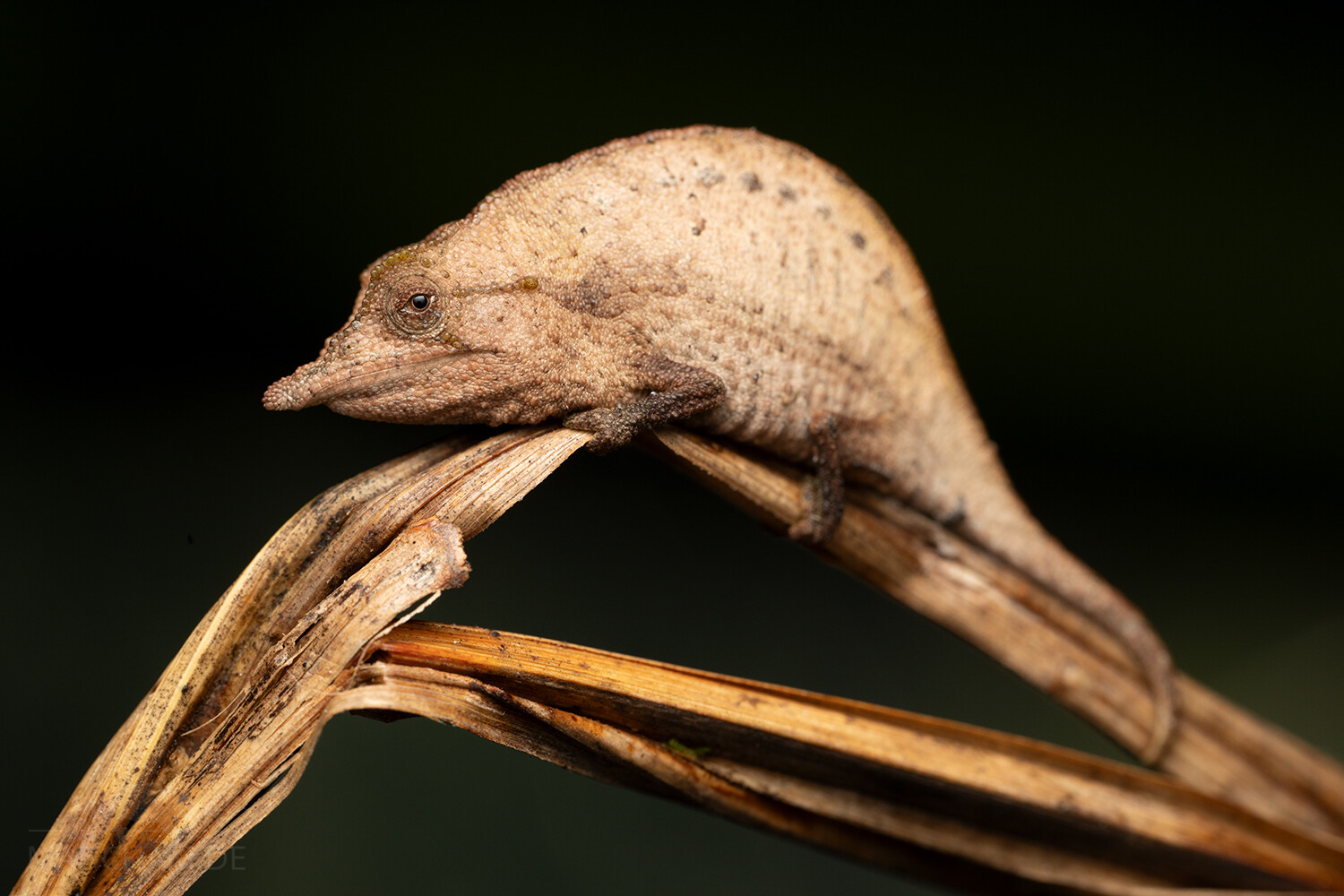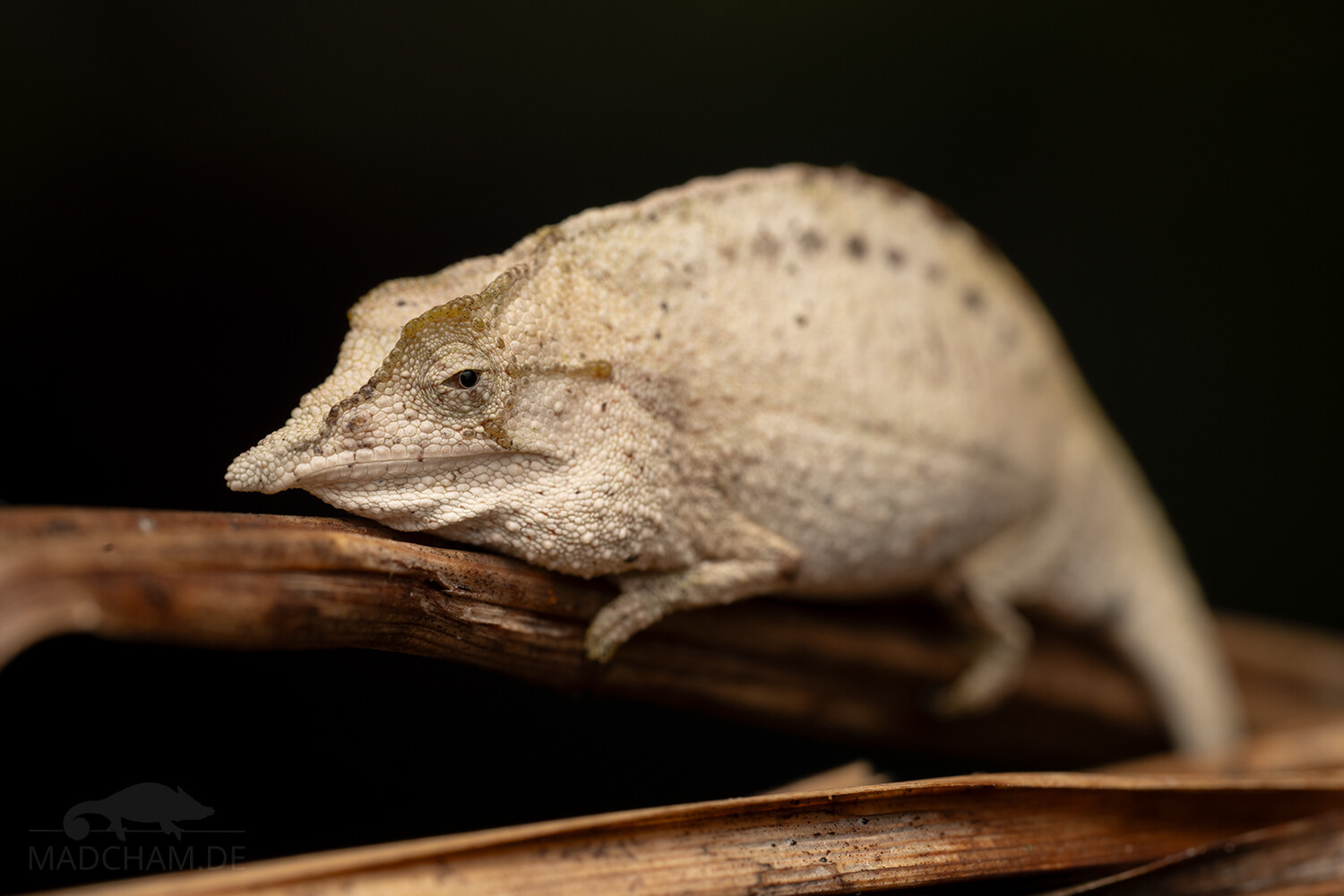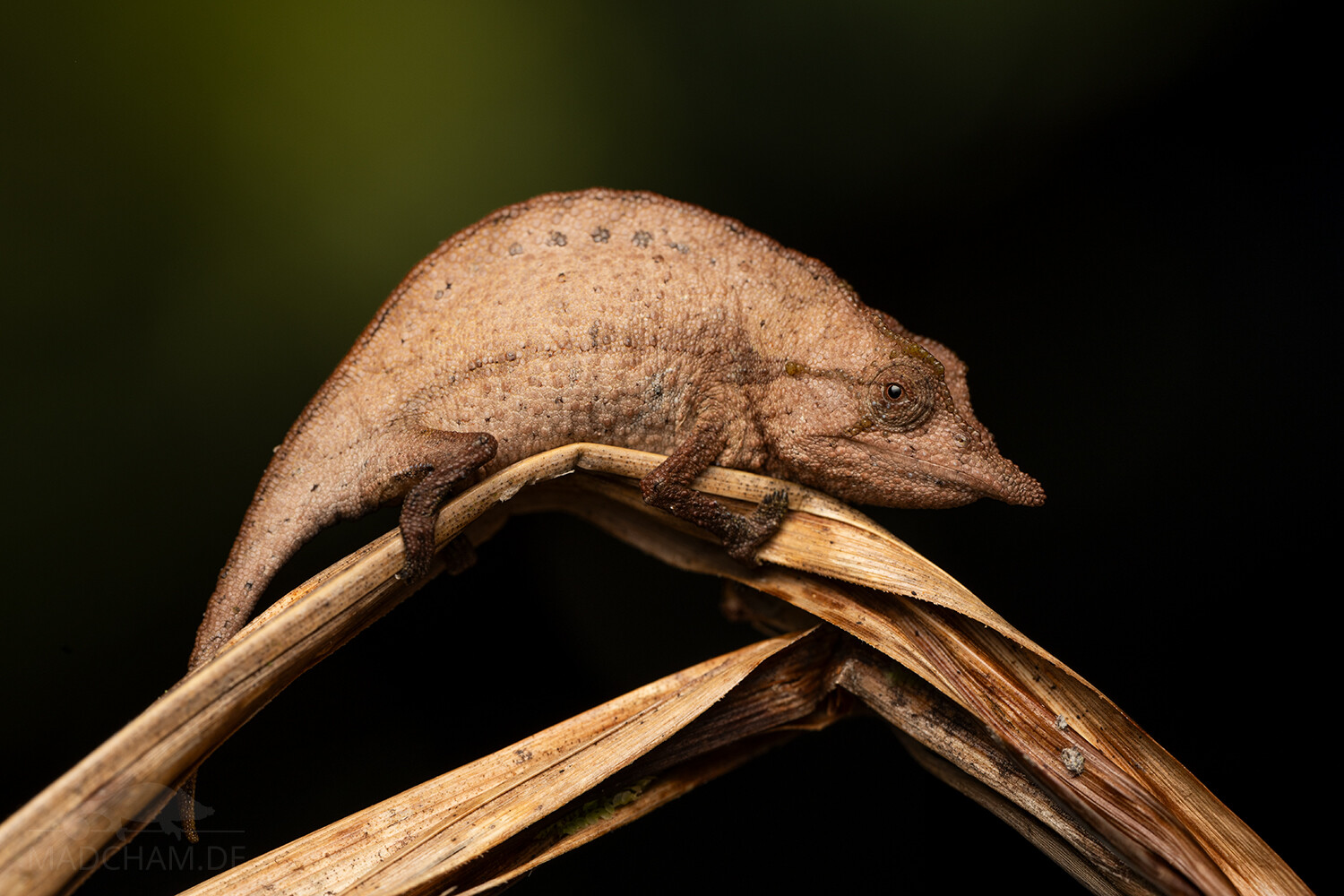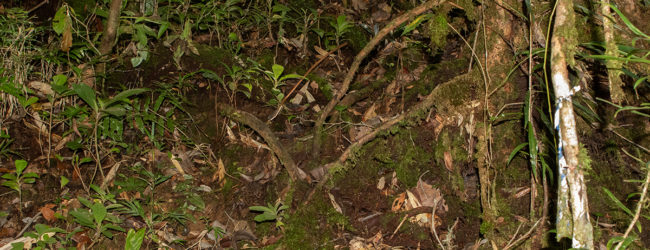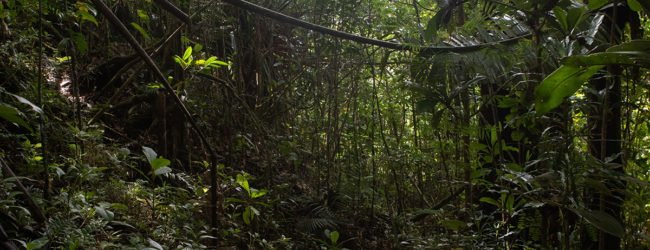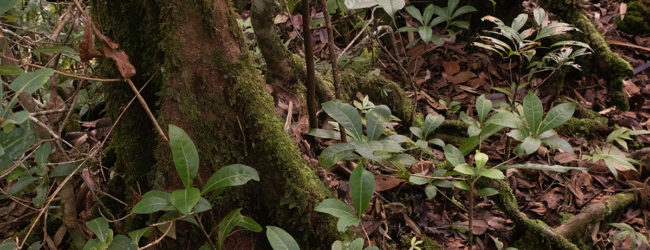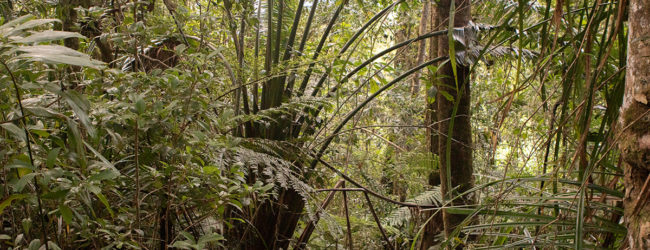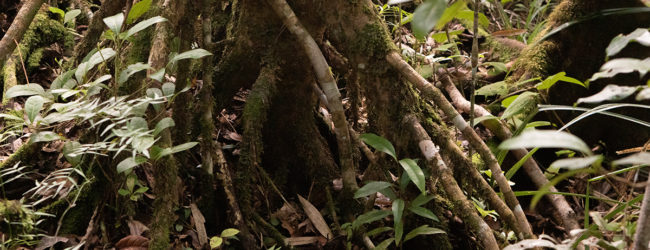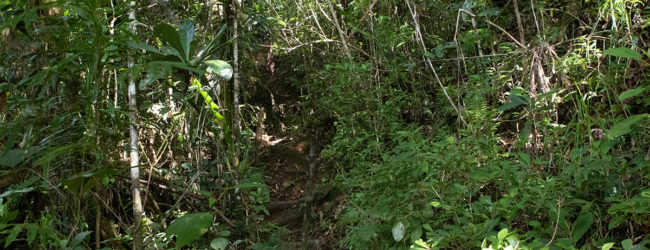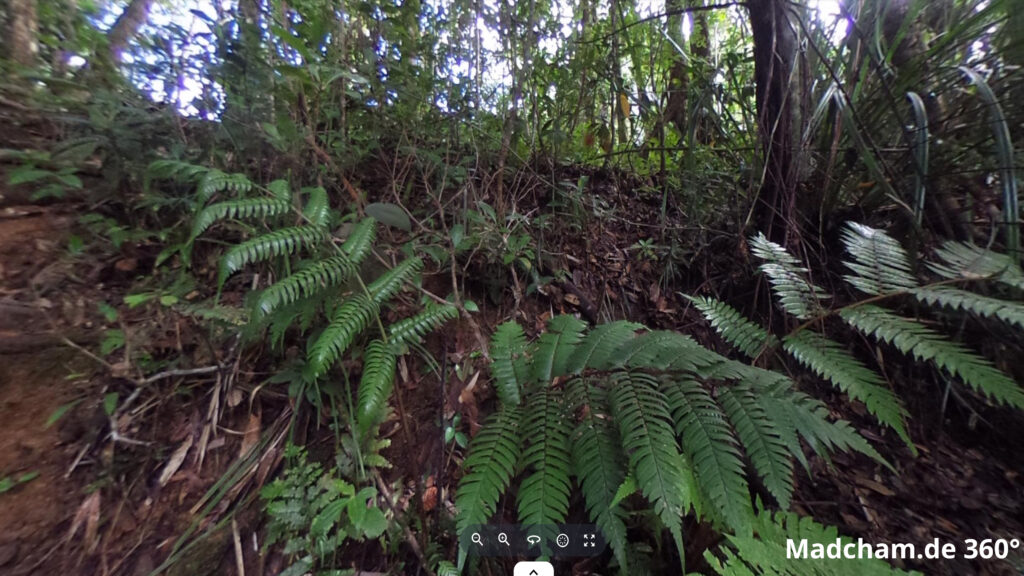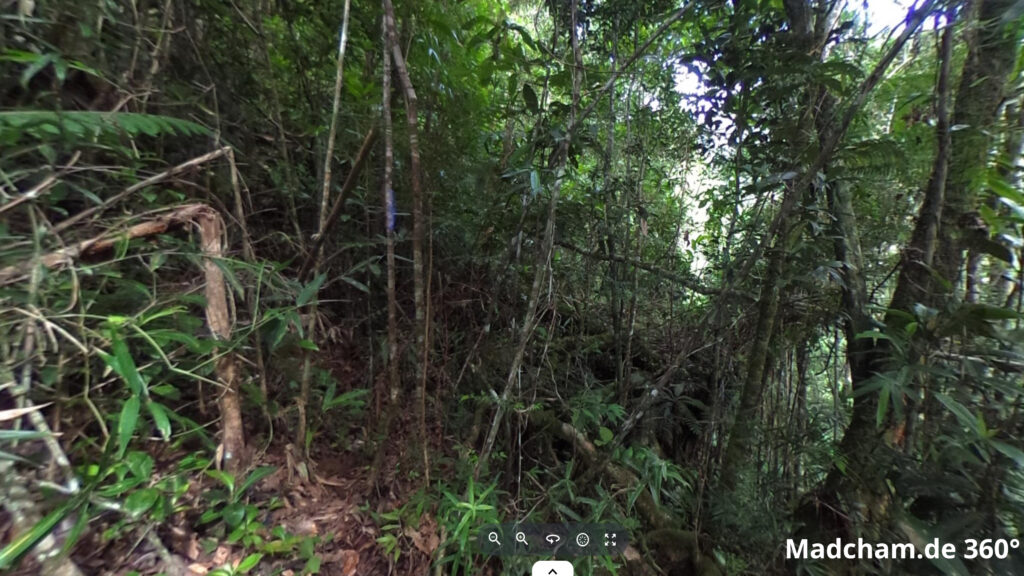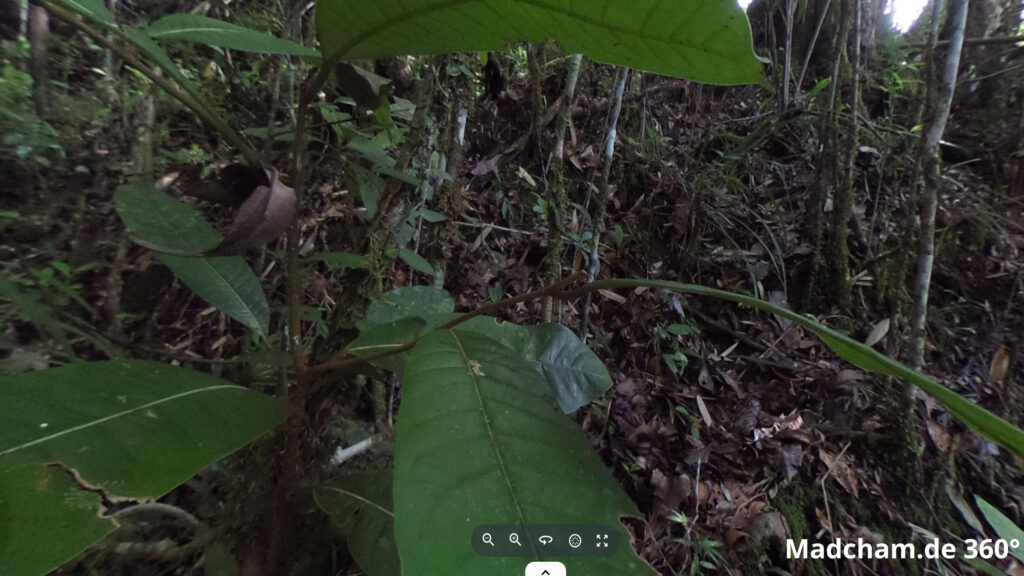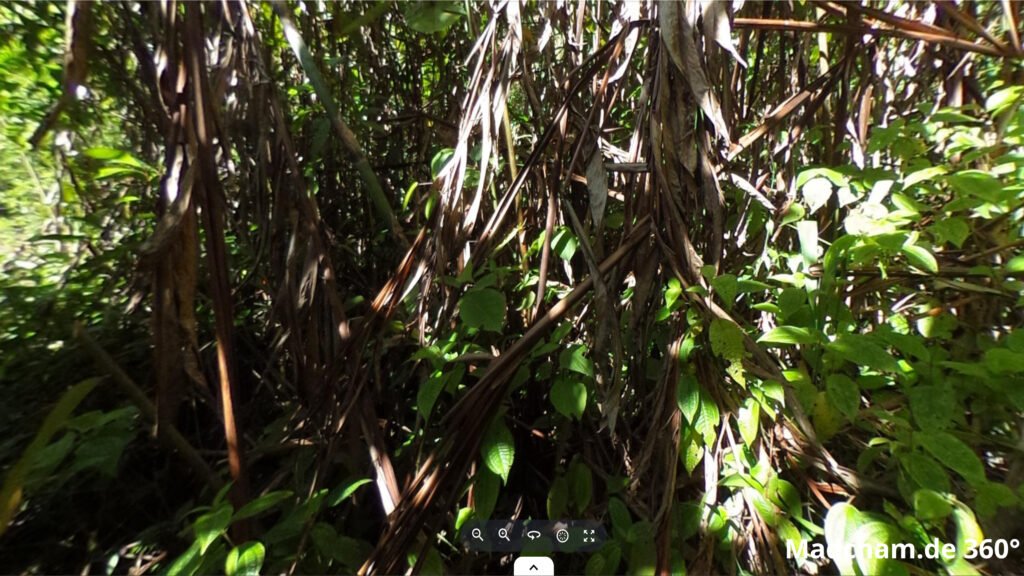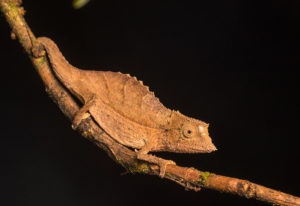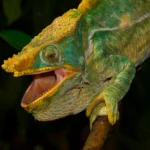No legal export possible
First description: 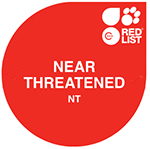
Origin of the species name:
Christopher J. Raxworthy from the American Museum of Natural History, New York (USA) and Ronald A. Nussbaum from the University of Michigan, Ann Arbor (USA) named the species after a local belief on the edge of the Tsaratanana Mountains, which mainly concerns the forest where the first specimens of the species were found. The people there believe in the existence of so-called lolontany, spirits of the ancestors. They can guide and direct the destinies of the living, but are usually peaceful and harmless. Lolo is the Malagasy word for spirit, tany is the Malagasy word for earth. The exact translation therefore means ‘earth spirits’. Similar traditional beliefs in ancestral spirits exist almost everywhere in Madagascar, and in many places these spirits have different names.
Distribution:
This species only occurs in rainforests that are difficult to access from 1200 m and up to over 2050 m above sea level. They were originally only described from the vicinity of Lake Matsabory and along the Befosa River at 2050 m and 1600 m altitude. Both locations are in the rainforest on the edge of the Tsaratanana Mountains in northern Madagascar. It has been known since 2013 that the species also lives in the cloud forest of Sorata. And in 2025, we were able to prove for ourselves that Palleon lolontany also inhabits the rainforest of Marojejy in north-east Madagascar. They are very rare to find there and you really need some luck to spot them. In Marojejy, the species occurs somewhat lower, but always above 1200 metres above sea level. It inhabits the deciduous layer of the uppermost part of the rainforest, just before the heath-like landscape at the very top. At night it can be found sleeping on thin branches or grasses up to a metre above the ground, but usually at knee height.
Appearance & size:
The females of Palleon lolontany grow up to 5 cm in size, while the males remain significantly smaller at up to 4.3 cm. The females are naturally somewhat plumper or larger than the males. In contrast to Palleon nasus, Palleon lolontany has a single, small nasal process consisting of scaly skin. The nasal process is slightly longer in males than in females and can be up to 8 mm long. The dorsal crest of the male is wavy, while that of the female is fairly smooth. The casques of both sexes are very flat and clearly pointed towards the back. Palleon lolontany are rather inconspicuously brown to beige in colour. The throat area is often lighter in colour in both sexes. Some animals have a narrow dark line on the sides of the body. Legs and arms are often darker in colour than the rest of the body.
Particularities:
In 2013, the species was taxonomically placed in the genus Palleon by Glaw, Hawlitschek and Ruthensteiner. Until then, Palleon lolontany had been classified as Brookesia. The investigations suggest that it is a sister genus of Brookesia, which developed much earlier than previously thought and is possibly one of the most ‘original’ chameleon species. Although they look relatively similar to the African Rhampholeon species, they are genetically very different and definitely not closely related.
| Jan | Feb | Mär | Apr | Mai | Jun | Jul | Aug | Sep | Okt | Nov | Dez | |
| Durchschnittl. Temperatur | 26 | 26 | 26 | 25 | 25 | 23 | 23 | 22 | 23 | 24 | 25 | 26 |
| Minimale Temperatur | 24 | 24 | 23 | 23 | 22 | 21 | 20 | 19 | 20 | 21 | 22 | 24 |
| Maximale Temperatur | 30 | 29 | 29 | 29 | 28 | 27 | 25 | 25 | 25 | 27 | 28 | 30 |
| Regentage | 28 | 23 | 27 | 22 | 24 | 21 | 20 | 18 | 23 | 22 | 16 | 25 |
Die angegebenen Daten wurden von uns innerhalb mehrerer Jahre mit Thermo- und Hygrometern direkt an den Fundorten der Tiere gemessen und zusammengetragen. "Durchschnittliche Temperatur" bedeutet, dass die Werte eines gesamten Monats zu einem Durchschnittswert berechnet wurden, z.B. wurden alle gemessenen Minimalwerte eines Monats zu einem durchschnittlichen Minimalwert für Februar berechnet. Das bedeutet im Klartext, dass einzelne Spitzenwerte eines Tages deutlich höher oder niedriger als die durchschnittlichen Minimal- und Maximalwerte liegen können. Es ist also möglich, dass zwar das durchschnittliche Maximum bei 29 Grad liegt, es aber an einigen Tagen des Monats 33°C oder gar 35°C warm war.
Marojejy besteht vorwiegend aus einem Regenwald, der sich über das gleichnamige heilige Gebirge auf Höhen von 200 bis maximal 2100 m über Meeresniveau erstreckt. In den höchsten Gebieten ist das Klima kühl und die Vegetation karg, die meisten Chamäleons leben jedoch im wärmeren Regenwald darunter. Marojejy verfügt über verschiedene Höhenstufen, auf der jeweils eigene Arten in einem eigenen Klima leben. In der niedrigsten Höhenstufe ist es sehr warm und feucht, in den mittleren und höhen Lagen wird es etwas kühler, aber nicht weniger feucht.
In Marojejy gibt es nur wenig Unterschied zwischen Regen- und Trockenzeit. Die Luftfeuchtigkeit ist stetig sehr, sehr hoch. In der Regenzeit sind die Niederschläge ergiebiger, halten oft Tage an und gehen ab und zu mit schweren Stürmen einher. In der Trockenzeit liegen die Temperaturen etwas niedriger, richtig kalt wird es jedoch nie und es regnet immernoch fast täglich. Und trocken wird es in der Trockenzeit in Marojejy auch nicht. 2022 haben wir die relative Luftfeuchtigkeit an verschiedenen Tagen in der Regenzeit gemessen, die Daten finden sich im Folgenden.
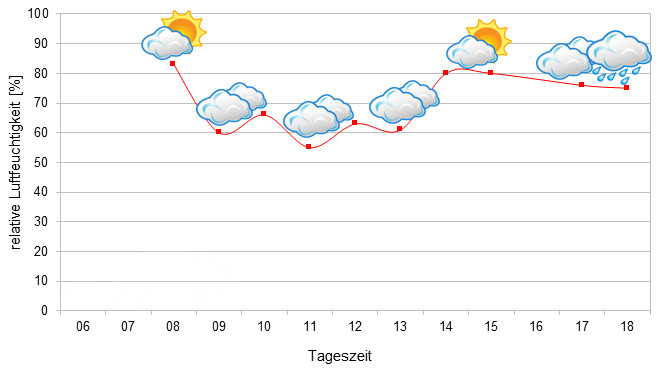
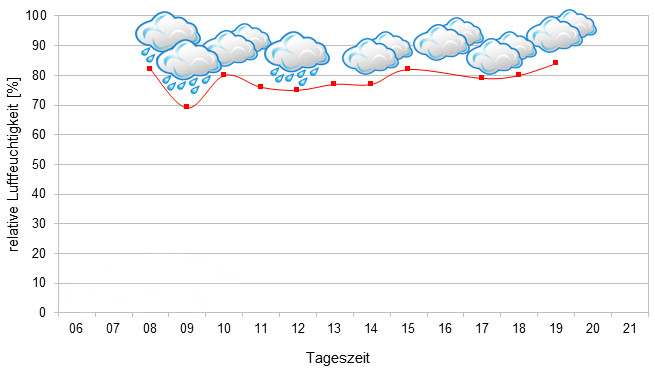
Die UVB-Daten wurden mit einem Solarmeter 6.5 in der Regenzeit, Ende März und Mitte April, zur höchsten Aktivitätszeit der Chamäleons gemessen. Gemessen wurden jeweils maximal für das Chamäleon zu erreichende Werte im Habitat.
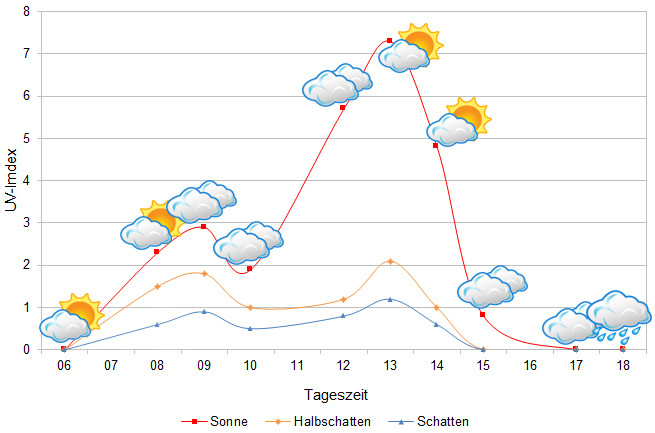
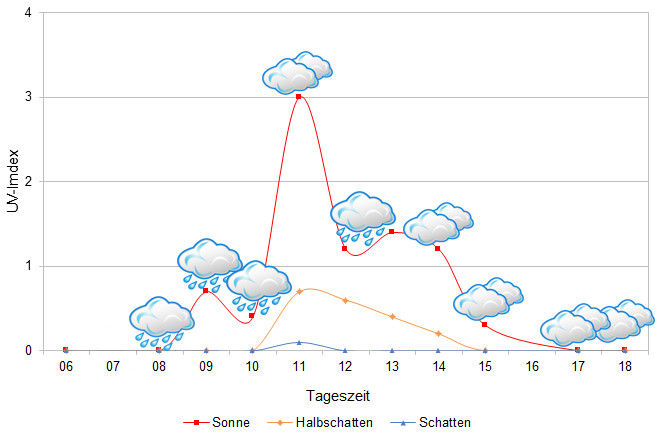
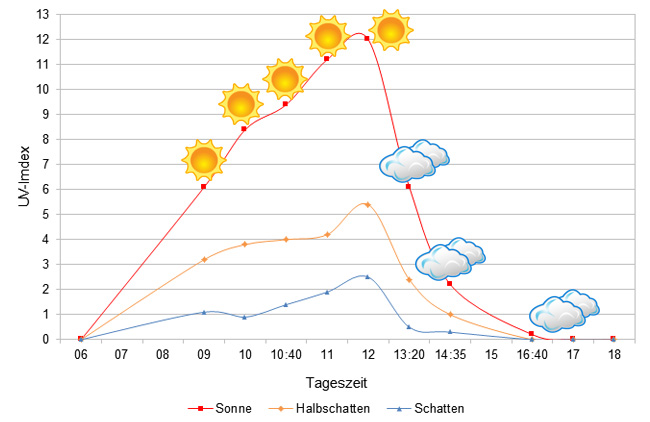
Seit 2022 messen wir zusätzlich zu anderen Klimadaten auch den Luftdruck an den von uns besuchten Orten auf Madagaskar. Die folgenden Daten stammen von verschiedenen Tagen während der Regenzeit. Auf der X-Achse befindet sich die Tages- oder Nachtzeit. Auf Madagaskar beginnt der Tag gegen 6 Uhr, die Nacht bricht bereits um 18 Uhr an. Die Y-Achse zeigt den atmosphärischen Luftdruck in hPa an.
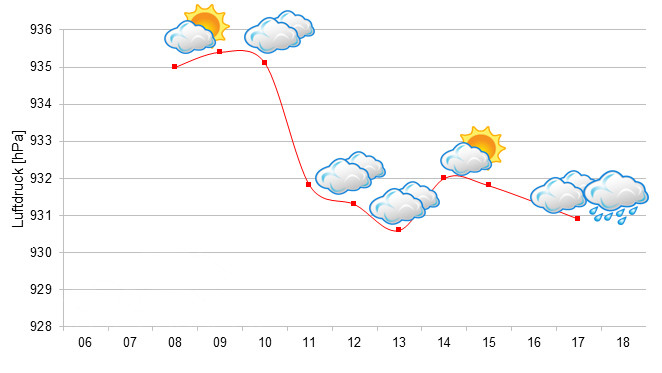
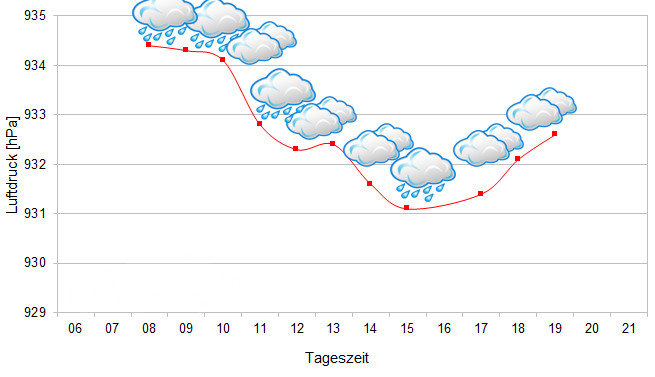
Habitat:
The habitat of Palleon lolontany is the highest elevations of inaccessible mountain cloud forests. They mostly live in dense undergrowth between giant jungle trees. In Marojejy, the soil consists of rocks and loamy earth, and in places there is an extremely large amount of moss, epiphytes and lichens. The entire rainforest consists of steep gorges and valleys with many streams running through them. The undergrowth is extremely dense. At higher altitudes in Marojejy, the rainforest tends to turn into a heath-like, lower-growing scrub landscape.
Below you will find some 360° images of the Marojejy rainforest that we took during the rainy season. If you click on the respective image, the pictures will open in an enlarged view in a separate window. You can use the mouse to rotate in all directions. You also have the option of running the images in full-screen mode. Have fun looking at them!

